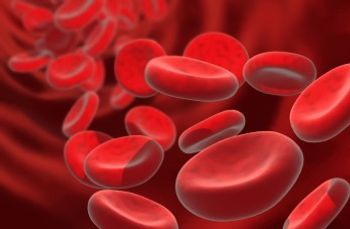
CARTITUDE-4 Study: Cilta-Cel vs Standard of Care for Lenalidomide-Refractory Multiple Myeloma
Panelists review the CARTITUDE-4 study results highlighting the efficacy of cilta-cel in lenalidomide-refractory multiple myeloma, addressing implementation challenges and patient preferences in varying relapse scenarios.
Episodes in this series

Transcript:
Judy Schreiber, PhD, RN: We’re going to go on to the last multiple myeloma presentation with Dr Janakiram on the CARTITUDE-4 study [NCT04181827]. Thank you.
Murali Janakiram, MD, MS: [These are] phase 3 results from the CARTITUDE-4 [study], which is cilta-cel [ciltacabtagene autoleucel] vs standard of care in lenalidomide-refractory multiple myeloma. I think my summary was already said by both my speakers at Fred [Hutchinson Cancer Center]. [Dr Banerjee] said he will choose CAR T all the time and [Dr Cowan asked] how [we’d] get the CAR T to everyone.... Just to go through everything, 516 patients were assessed for eligibility and 419 underwent randomization, of [whom] 208 were on the cilta-cel arm and 208 received standard of care of [whom]; 176 actually got the cilta-cel, which is the most important thing. I think that the trial was good because it powered it for intention to treat.
It is interesting to note that 32 patients discontinued the trial treatment, 30 had progressive disease, and 2 passed away before getting cilta-cel. In the other arm, only 1 died. One patient died of progressive disease before starting the treatment. So, these are the curves for PFS [progression-free survival]. There is such a clear separation that I don’t even need a P value. The [HR] was 0.26. Initially, there was a bigger drop in the cilta-cel curves, which is definitely to be noted, and that was because of rapid progressive disease. Hence, there was a drop. But after that, the cilta-cel group had a better [PFS] than the standard-of-care group.
I think that was the only slide I needed to make my point. If today I have access to both cilta-cel and standard of care, cilta-cel would be my preferred therapy. The challenge is, and always has been, implementation and capacity. Most patients with multiple myeloma in the first to third relapse [setting] will be seen and treated in the community—early referrals, finding transportation, lodging…will be the challenges. Increased capacity, when a referral is made, [there’s a] 100% chance their patient will receive CAR T [chimeric antigen receptor T-cell therapy] if it’s a need, but most institutions cannot guarantee that. As soon as referral is made, we can give CAR T to this patient in a timely manner. I see this as more of an implementation challenge rather than a data challenge at this point. I would welcome any questions.
Judy Schreiber, PhD, RN: Thank you so much. Seattle?
Andrew J. Cowan, MD: Yes, that was excellent. I love the succinctness of your conclusion, and you’ve crystallized all my thoughts very nicely about this. I’m interested in how you’d present this to patients, because it’s a common thing. We see a patient who’s potentially eligible for BCMA [B-cell maturation antigen] CAR T cells, and we have other options like a bispecific antibody or a different 3-drug combination. The question is always: What do we do next? Patients increasingly are having this mindset that the goal is to get to CAR T, that all roads lead to CAR T. I personally think that’s…a logical error because the issue of implementation is really critical. And for us, it’s not just slots; the slots are better. It’s the ability to have staffing and resources to treat the patient. The fact [is] that, as you mentioned, CAR T-cell therapy is not available at community centers, so the goal should be trying to allow community centers…to be able to deliver this therapy safely. It doesn’t seem like that’s really happening, so we’re still limited to academic centers.
Dr Janakiram, how do you present this to your patients if you have a patient like this? This is the take that I’ve had. [There is a] 96% or [similar] response rate to CAR T. Let’s take a bispecific antibody. [The] overall response rate is 60%. I think it’s clear [that] if you could get either one equally, you would prefer a BCMA CAR T cell. That’s a no-brainer. It’s a 1-time treatment, it has a higher response rate, and responses are durable. But the problem, as you mentioned, is the implementation. You have to factor that in. So, what’s the factor? It’s not really 100% response rate. It’s like you have to multiply that by…0.5 or something to account for the fact that it could take 6 to 9 months, and many of these patients may not be alive, at least at the current approval. With CARTITUDE-4, maybe that’ll be different. Going back to what I mentioned earlier, I tend to go with what is best available and what I think I can get for the patient, rather than trying to string some along with hyper CVAD [cyclophosphamide, vincristine sulfate, doxorubicin hydrochloride, dexamethasone], PACE [cisplatin, doxorubicin, cyclophosphamide, etoposide], or something that’s just going to cause them to be in the hospital for months. But I’m curious how you handle those patients, because I feel like everyone has a different answer.
Murali Janakiram, MD, MS: That’s a great question. You presented me with 2 challenges. One is if a person comes to me who’s living 10 miles from where I practice and are going to get a CAR T. The other person is the one who’s going to be 60 miles away. The third [challenge] is, if I am in the community center and I have to refer a patient who’s a day-to-day worker [and] cannot afford to miss days of work, to get a patient to and from an academic center. From a patient perspective, it brings us all the points. As you said, patients prefer CAR T. I think one of the reasons is because it becomes a 1-time treatment. We have had all our transplant patients, and they think, “Transplant is the end of my road, then I can be free of being tied up to the institution.” I think that is what CAR T is doing. And I think, as you said, we need to get to time-limited therapies.
These therapies—until progression in first [or] second relapse—are not going to work, especially with CAR T in the picture. I think that’s one [thing]: time-limited therapies and relapses. Second…I think you’re right. If we take CAR T, we have to cut its [HR] by 0.3 or 0.4 and then compare, because that will be at the population level. We need something like daratumumab because it can easily be implemented and they can see the SEER curves shifting better. With CAR T, it’ll be tougher to shift those SEER curves if we don’t have access. I think that is where the challenges lie. I really talk to the patient like all of you and say, “Look, if access is the issue and you have to leave lines of work, then we have to be sure we…get a slot or continue your treatment at that point. We will get you N1s for leukapheresis, and whenever you have time—because a CAR T cells can still be short for 10 months—you can come in for CAR T.” It’s not the perfect answer, but trying to get to the answer of how you treat patients who come from far away as best as possible. I would like to hear your thoughts.
Rahul Banerjee, MD, FACP: I’ll ask a real debate question. This is very inspired; the succinctness of the slide deck was very nice. Again, going with the second-line therapy, the patient who’s now having, let’s say, biochemical PD, to Dr Cowan’s first point, on first-line [lenalidomide] maintenance, lives far away. I would argue that CAR T is not curative yet, but even if you take cilta-cel’s CARTITUDE-1 [NCT03548207] data [with a] PFS of 35 months, isa-Kd matches that. Dara-Kd [daratumumab, carfilzomib, dexamethasone] is close to it. How would you choose? Would it be reasonable [to tell] a patient progressing on first-line therapy, “Look, just get dara-Kd [or] isa-Kd in the community and come back. By 2026, we’re going to have even better CAR T—no manufacturing failures, rapid turnaround times, more persistent, etc.” Or would you think…everyone with first relapse is entitled and should be in the queue equally for CAR T?
Murali Janakiram, MD, MS: Very provocative question.… I think it depends. If you [can] get CAR T, we should deliver the CAR T to that patient because it’s very similar to transplant. People can have access only during short windows, and if we are unable to deliver it within that short window…then there’ll be attrition. That is my worry. So to the first question, yes, if a patient is eligible for CAR T and has a time and resources. The problem has always been the time and resources from the patient’s side, [which] we have to tremendously respect. So yes, they might have the time and resources now, so let’s do the CAR T. That’s what I would say.
Andrew J. Cowan, MD: For what it’s worth, I agree. It is time and resources that really make the difference. I’m in the same camp. If I have a patient who’s early and they’re relapsing and they’re eligible, CAR T…after a discussion, would be my preference just because it’s better…for time toxicity [and] patient satisfaction. And it’s frankly what they want, if they can [get it]. But [for] most patients, it’s a challenge. I would say [for] more than 50%, it’s not easy.
Rahul Banerjee, MD, FACP: Agreed. Because in my mind, what I’m planning to do when it comes to second line for patients where they’ve had 2 relapses, is third-line therapy absolutely CAR T? If it’s just a first relapse and second line, I might not put them as high on my internal wait-list going forward. I’m curious whether all of you would prioritize that first-relapse and second-relapse patient equivalently, knowing we have scarcity of time, resources, and patient beds, etc?
I would treat third line differently than the second line. Third line was absolutely CAR T. Second line, I would say, “Look, we have limited resources. I’m not going to put you first on my wait-list unless there’s functional high risk, [extramedullary disease], or something scary.” I know some of my colleagues across the country are going to say all relapses are created the same, everyone should get CAR T…or equal spots on the wait-list…without regard to what line they’re on.
Murali Janakiram, MD, MS: What about ide-cel [idecabtagene vicleucel]? Ide-cel doesn’t have lots of spots. To my knowledge, it’s more widely available, but patient preference is strongly for cilta-cel. How do we reconcile that? How will that change your thinking?
Rahul Banerjee, MD, FACP: Excellent question. And to be fair, KarMMa-3 [NCT03651128] was 2 to 4 prior lines, which makes it a little easier. But you’re right, there [are] a lot of questions here. I think we need a whole day.
Transcript is AI generated and edited for clarity and readability.
Newsletter
Stay up to date on recent advances in the multidisciplinary approach to cancer.



















































































